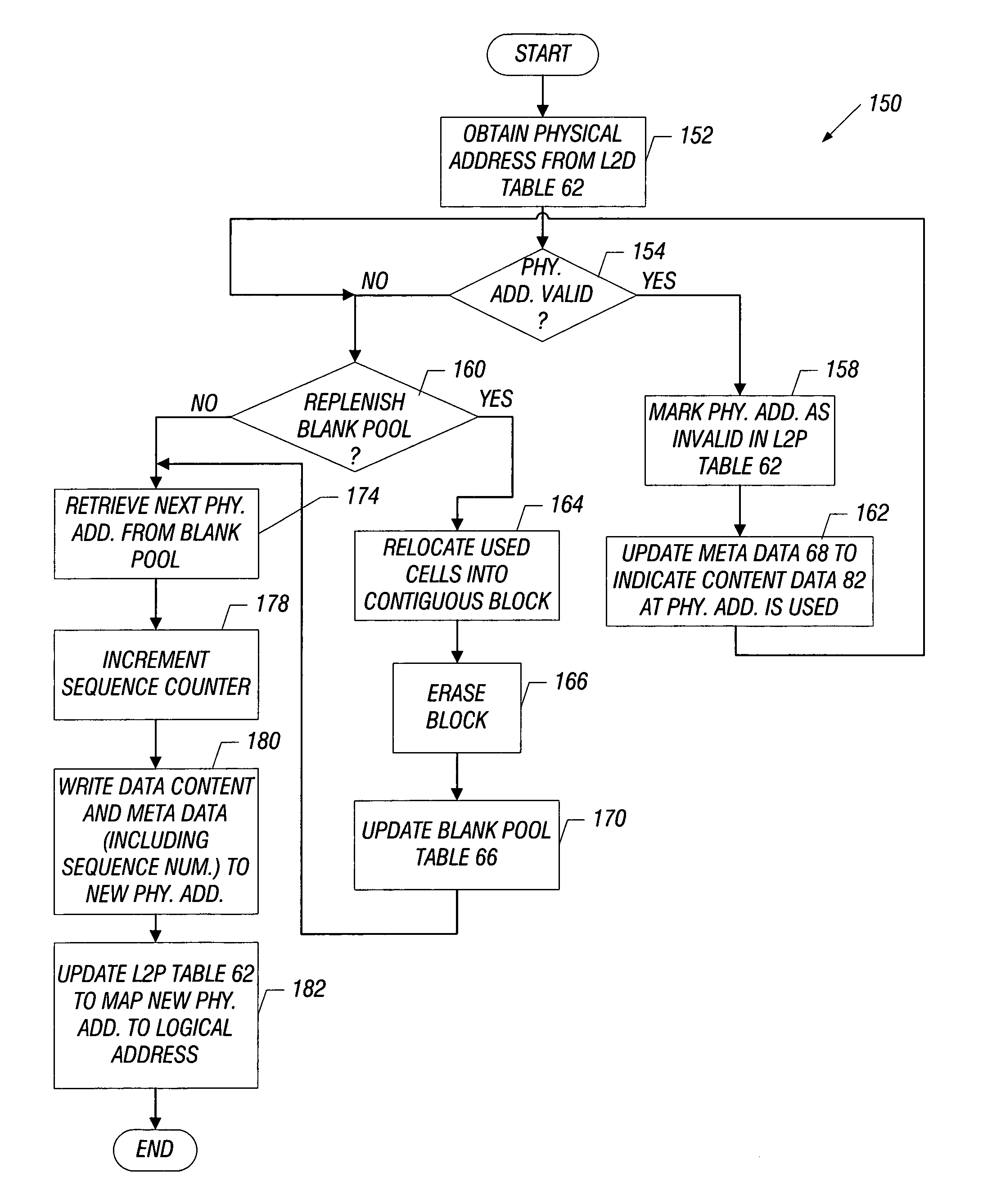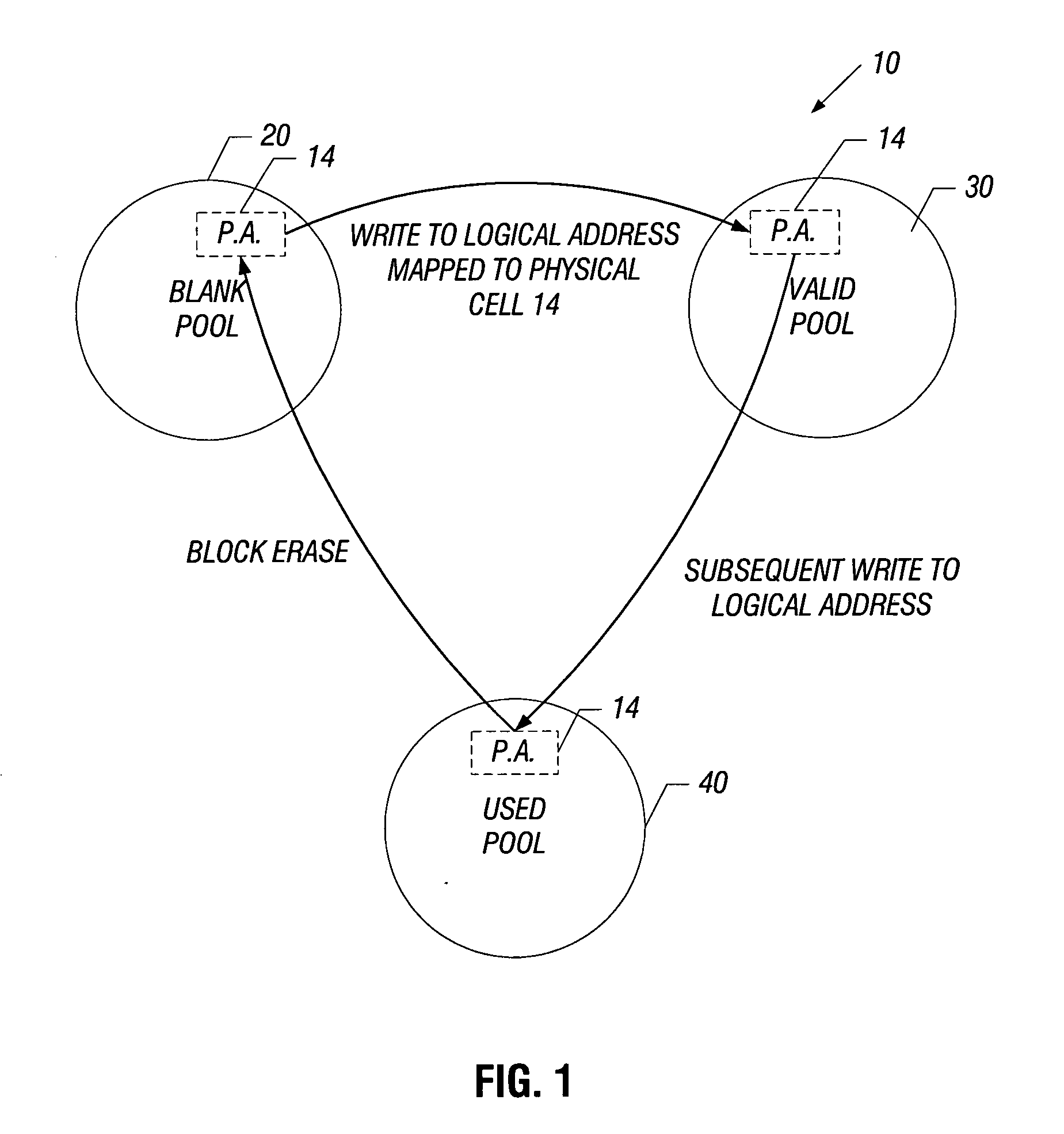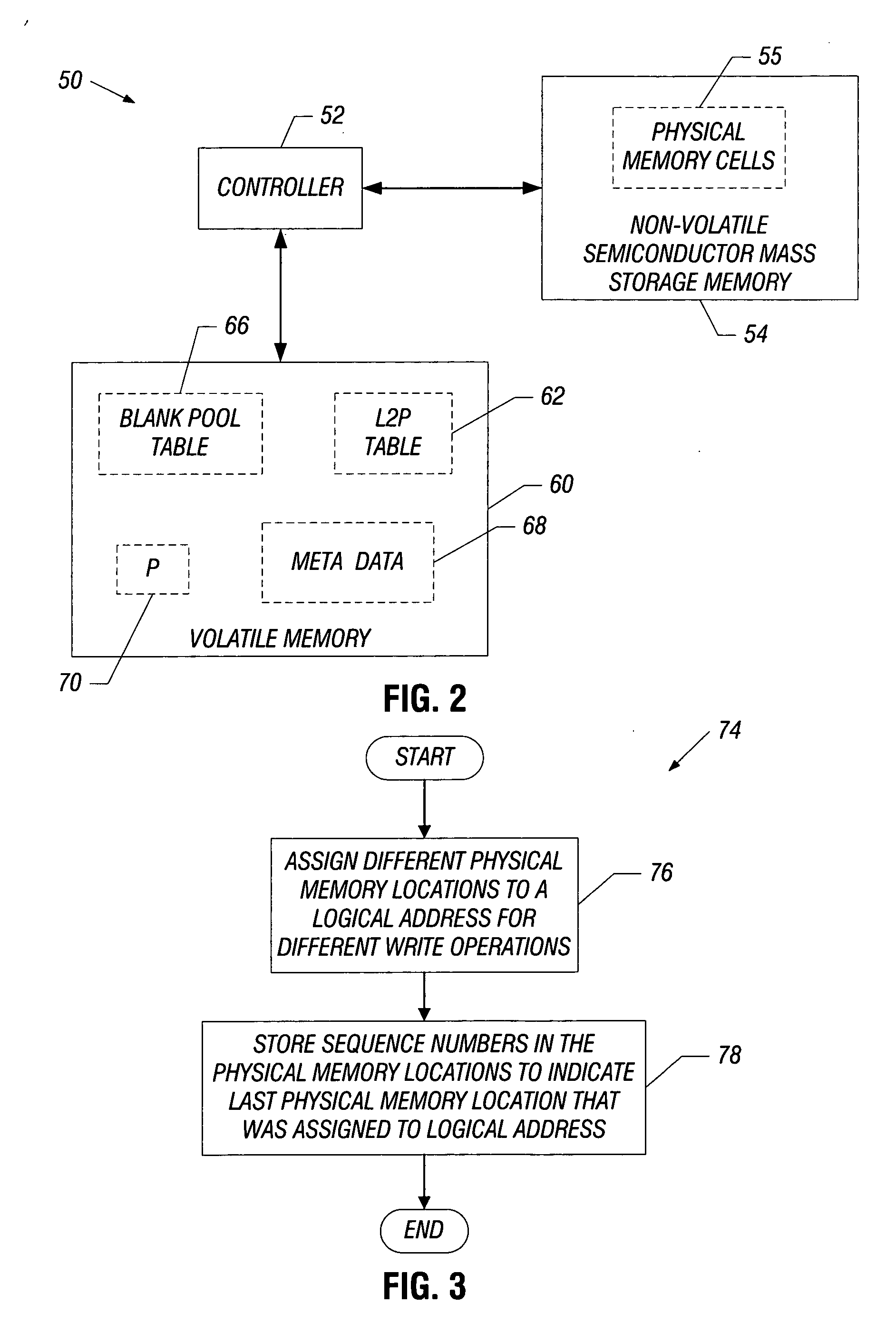Technique to write to a non-volatile memory
a non-volatile memory and writing technology, applied in the direction of memory architecture accessing/allocation, instruments, computing, etc., can solve the problem that the cells of flash memory typically cannot be re-written without first being erased
- Summary
- Abstract
- Description
- Claims
- Application Information
AI Technical Summary
Problems solved by technology
Method used
Image
Examples
Embodiment Construction
[0015] In accordance with embodiments of the invention described herein, dynamic addressing is used in connection with a non-volatile semiconductor memory (herein called a “non-volatile memory”) for purposes of minimizing the write latency of the memory. More specifically, in accordance with embodiments of the invention that are described herein, the non-volatile memory is, from a software standpoint, addressed using logical addresses. From the standpoint of the physical read and write operations that are performed with the memory, the dynamic addressing translates, or maps, the logical addresses to physical addresses of the memory. The dynamic addressing continually changes the mapping between the logical and physical addresses to ensure that each logical write operation causes data to be stored in a previously erased location (i.e., at a different physical address) of the non-volatile memory. Thus, with dynamic addressing, each logical write operation produces a single operation. ...
PUM
 Login to View More
Login to View More Abstract
Description
Claims
Application Information
 Login to View More
Login to View More - Generate Ideas
- Intellectual Property
- Life Sciences
- Materials
- Tech Scout
- Unparalleled Data Quality
- Higher Quality Content
- 60% Fewer Hallucinations
Browse by: Latest US Patents, China's latest patents, Technical Efficacy Thesaurus, Application Domain, Technology Topic, Popular Technical Reports.
© 2025 PatSnap. All rights reserved.Legal|Privacy policy|Modern Slavery Act Transparency Statement|Sitemap|About US| Contact US: help@patsnap.com



